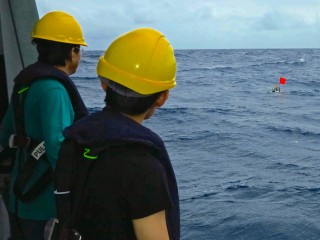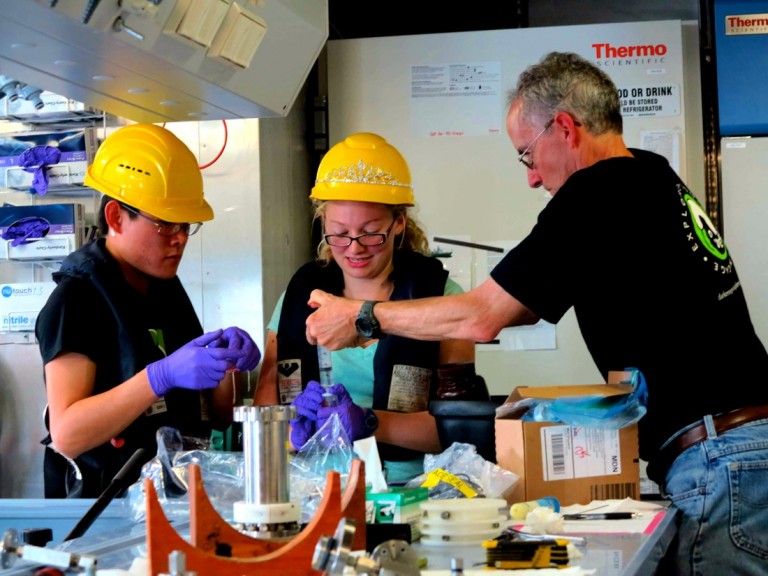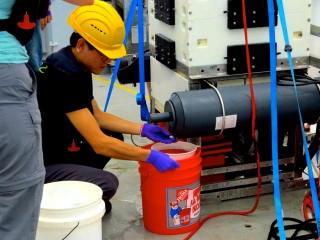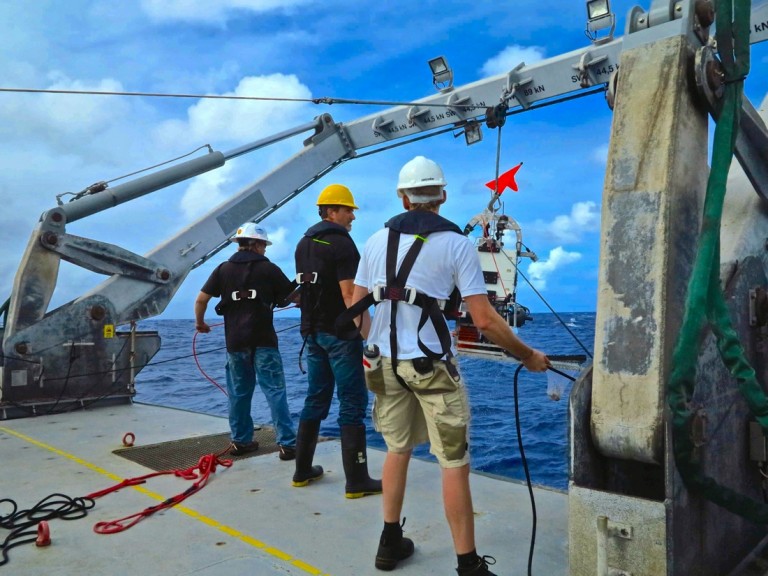I am on this expedition to collect seawater. Before the trip, when I told people that was going to be my mission, they usually responded with something like this: “You live in San Diego surrounded by the ocean. Can’t you just go to the beach like a normal person and collect seawater there without skipping school, flying to Guam, and sailing to the Mariana Trench?”

I had to explain that what is found in the trench seawater is totally different from what is found in surface water. The Challenger Deep, being the deepest point on Earth, is home to extremely bizarre organisms that can eat whatever scraps rain down from the upper water column, and that can withstand crushing pressure. Figuring out what organisms are down there, and what food is available to them, is what we’re doing when we analyze water samples. This is one of the best ways to understand how the trench works, and to reveal the secrets of the deep-sea.

Well Kept Secrets
The trench does not reveal her secrets willingly. She has buried them under nearly 7 miles of water, in eternal darkness, and protected them under a pressure 1000 times greater than normal atmospheric pressure. Because of these challenges, it is extremely risky and expensive for a personal visit to the deepest point. Instead, we use free-falling vehicles called landers. For me, getting the dirty work done involves landers equipped with huge water bottles to collect water samples. Once the landers resurface, it is time for me to play.
Working Fast
Time is of the essence once a lander is retrieved. It is important to keep the samples cold at 4°C (39°F) to minimize heat shock and degradation of genetic material. One small portion of each trench water sample we save for analyses of the amounts of nutrients and food—in the form of organic carbon—that are present. This gives us an idea of what the microbes are eating, and how much nutrient fuel is available to support their growth.

Another portion we use for a microbial roll-call—a one cell at a time analysis of what microbes are present. This tells us who is living down there.
The remaining water we filter for microbial DNA extraction. This reveals what kinds of genes are found at higher concentrations, which can be a good indicator of which genes are most important for enabling survival under such great pressure. This information can in turn aid research on how organisms adapt to the trench environment and figuring out what biological mechanism make this amazing feat possible.

The View
All told, these analyses help us to paint a rough picture of the trench environment and to uncover the secrets the trench has so effectively guarded for so long.
Processing is now well underway, and we’re looking forward to several more deployments that should bring back additional water samples. Please check back in and we’ll tell you what we learn as we listen to the tale of trench water.

